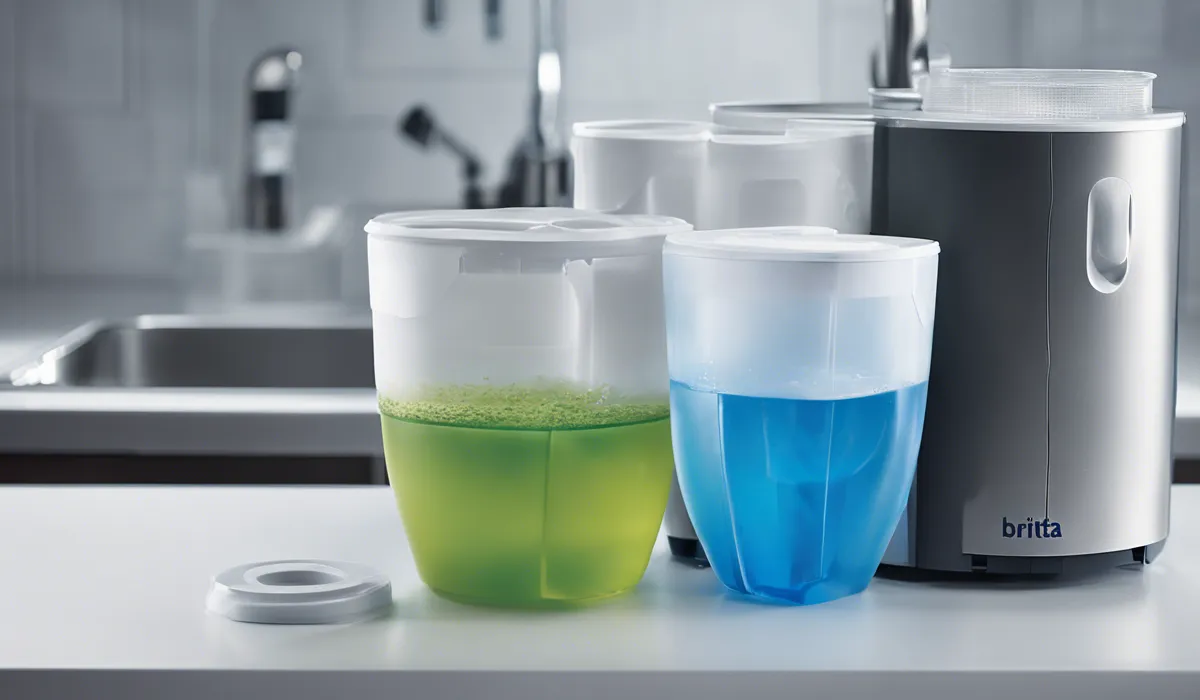Yes, mold in a Brita filter can potentially make you sick. Mold exposure might lead to respiratory issues or allergic reactions in some individuals. It’s important to regularly clean your Brita and replace filters as recommended to prevent mold growth.
Understanding Mold in Brita Filters

What is Mold?
Mold is a type of fungus that can grow almost anywhere there is moisture and organic material. It reproduces through tiny spores that travel through the air.
When these spores land on a damp spot, they may begin to grow and can digest the material they are growing on to survive.
Conditions for Mold Growth in Brita Filters
Mold thrives in moist environments. Brita filters, designed to hold and filter water, can provide the perfect habitat for mold if they are not properly dried out between uses.
If a Brita filter is left in a damp state, or if the filtered water reservoir is not emptied regularly, mold can begin to form.
Types of Mold in Water Filters
Several types of mold might grow in water filters, including but not limited to black mold (Stachybotrys chartarum), Aspergillus, and Penicillium.
These molds are not only unsightly but can also potentially lead to health problems if ingested.
Frequency of Mold Appearance in Brita Filters
Mold can appear in Brita filters if the filters are not changed regularly or if the pitcher or dispenser is not cleaned properly.
The frequency of mold development depends on how well the Brita system is maintained.
Health Effects of Mold Exposure
Exposure to mold can cause a variety of health issues, especially for individuals with mold allergies or weakened immune systems. Symptoms of mold exposure can include coughing, sneezing, throat irritation, and in more severe cases, respiratory infections.
Health Implications of Mold Exposure from Brita Filters

Short-term Health Effects of Ingesting Mold
Ingesting small amounts of mold from a Brita filter might cause nausea, vomiting, or diarrhea in the short term. For most healthy individuals, these symptoms are temporary and not severe.
Allergic Reactions and Respiratory Issues
People with mold allergies may experience more severe reactions such as wheezing, difficulty in breathing, or a full-blown asthma attack.
It’s essential to address mold issues promptly to prevent these health complications.
Long-term Health Risks of Consuming Moldy Water
Regular ingestion of mold over a long period can lead to more profound health issues. These can include persistent digestive problems and a weakened immune response, increasing susceptibility to other infections.
Vulnerable Populations
Children, the elderly, pregnant women, and individuals with pre-existing health conditions, such as those with compromised immune systems, are particularly susceptible to mold’s adverse effects and should avoid mold-contaminated water.
Recognizing Mold in Drinking Water
It is crucial to spot the signs of mold in your Brita filter early. These signs include a musty smell, discoloration, or a slimy feel in the water or on the filter itself. Seeing any of these signs means it’s time to act to ensure safe drinking water.
Prevention and Remediation of Mold in Brita Filters

Cleaning and Maintaining Brita Filters
To prevent mold, clean your Brita pitcher or dispenser regularly with hot, soapy water. Make sure to dry it thoroughly before refilling.
For the filter, soak it in water for 15 minutes before use to activate the carbon, and replace it every two months or after filtering 40 gallons of water.
Filter Replacement and Storage Best Practices
Always follow the manufacturer’s recommendations for filter replacement. Store your Brita filter in a cool, dry place away from direct sunlight to prevent mold growth when not in use.
Tips to Prevent Mold Growth
Keep the lid of your Brita pitcher or dispenser closed to prevent spores from settling. Empty the reservoir and dry the pitcher if you won’t be using it for a while. Regularly inspect the filter for any signs of mold and replace it immediately if you spot any.
When to Discard a Brita Filter?
If you detect mold on your Brita filter, it is safest to discard it immediately. Cleaning a filter with visible mold is not recommended as the spores can easily spread and may not be entirely removable.
Alternatives if Mold Persists
If mold is a persistent problem, consider using distilled or bottled water. You can also explore other water purification systems that may be less prone to mold, such as reverse osmosis or UV light systems.
FAQs About Mold in Brita Filters
Can mold in a Brita filter make you sick?
Yes, mold in a Brita filter can potentially make you sick, especially if you are allergic or sensitive to mold.
What are the symptoms of sickness from mold in a Brita filter?
Symptoms can include respiratory issues, allergic reactions, coughing, and throat irritation.
How often should you clean your Brita to prevent mold?
You should clean your Brita pitcher and replace its filter every 2 months, or as recommended by the manufacturer, to prevent mold growth.
Can mold grow inside Brita filters?
Yes, mold can grow inside Brita filters if they are not maintained properly, including regular cleaning and timely replacement.
What should you do if you find mold in your Brita filter?
If you find mold in your Brita filter, discard the filter, thoroughly clean the pitcher with hot soapy water, and replace it with a new filter.
Final Thoughts
Mold growth in Brita filters can pose health risks, such as respiratory problems and allergic reactions.
To safeguard against these issues, it is critical to maintain cleanliness by routinely washing the pitcher and adhering to the recommended filter replacement schedule.
